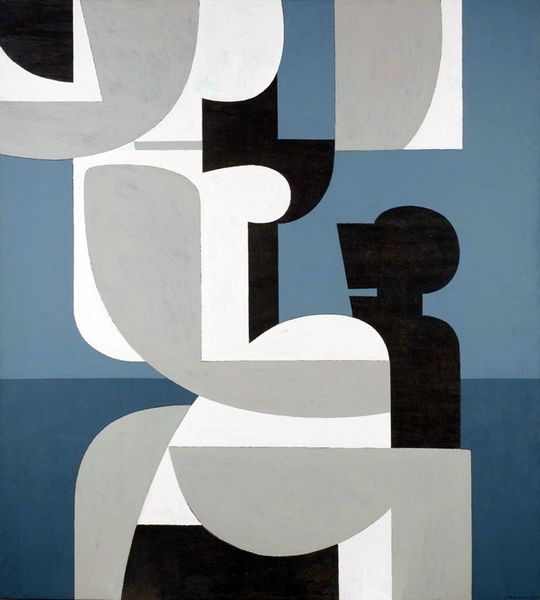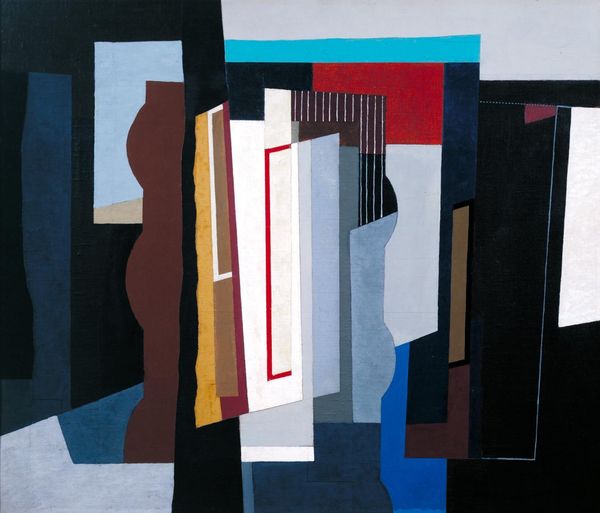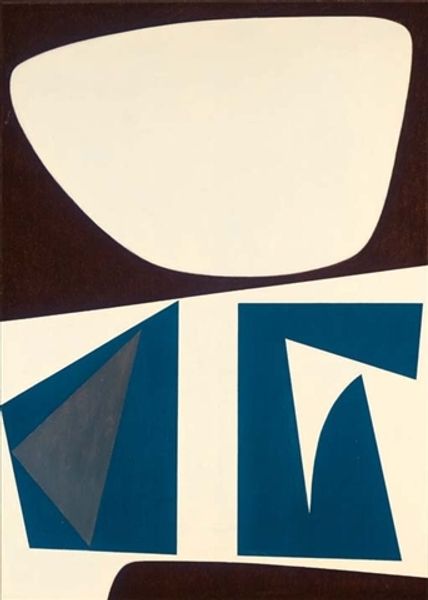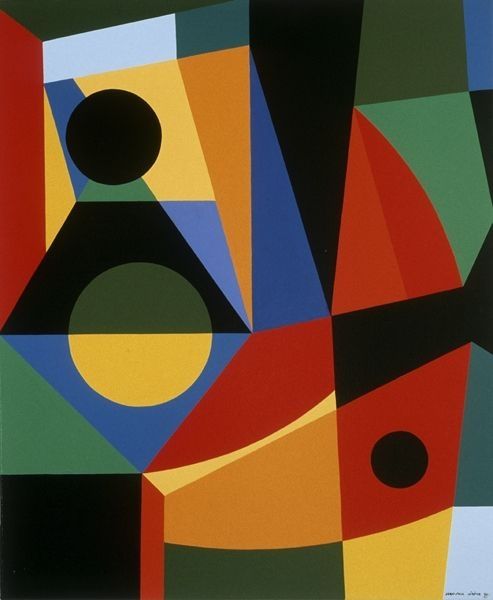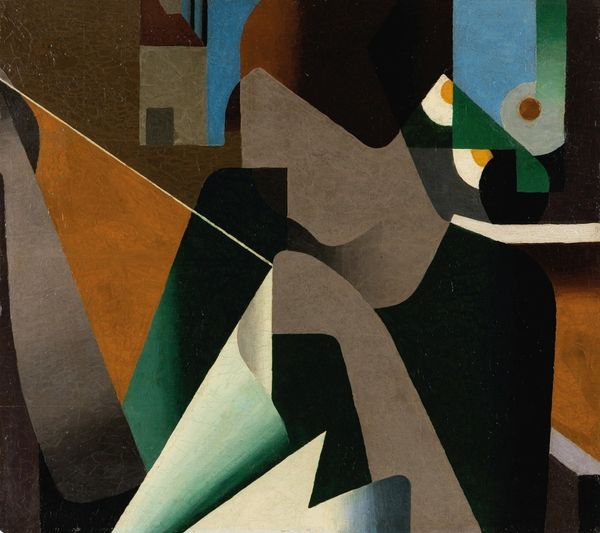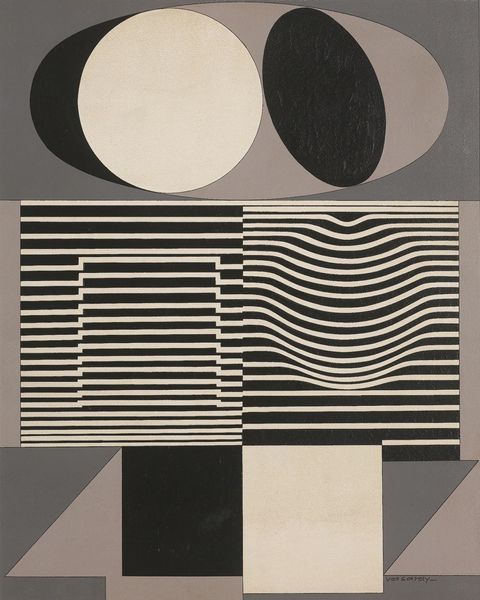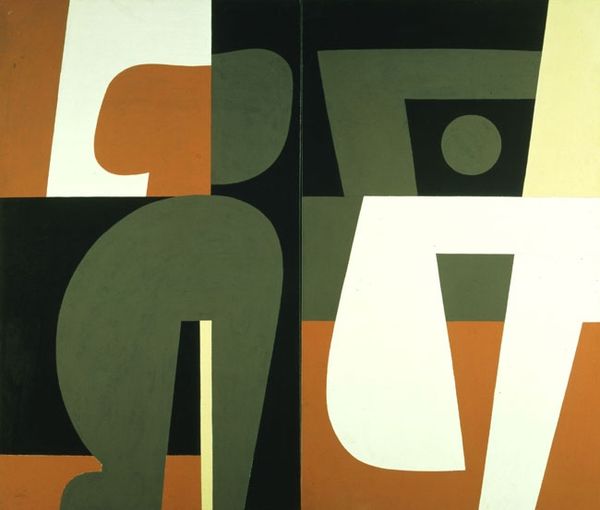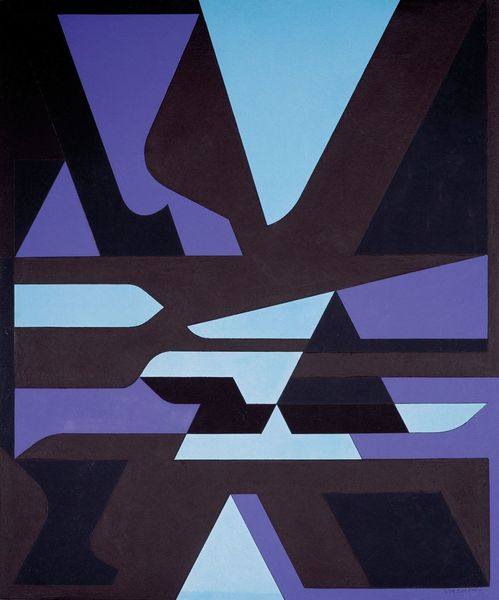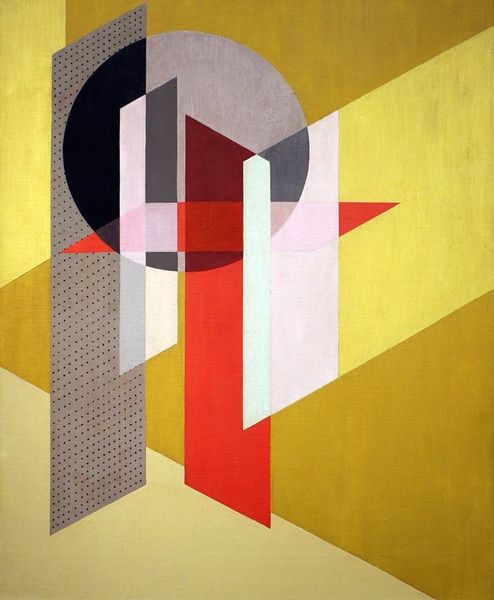
Dimensions: 200 x 200 cm
Copyright: Yiannis Moralis,Fair Use
Editor: So, this is Yiannis Moralis' "Eroticon," painted in 1990 using acrylic. The interlocking geometric shapes, in greys, whites, blacks and blush tones, remind me of fragmented bodies or architecture...it has a cool and detached feel. What catches your eye about this piece? Curator: I'm interested in the means of production here. Looking at the canvas, can you see any variations in texture, places where Moralis might have layered the paint? The visible texture directs us toward the physicality of the work itself, moving beyond simply representational or symbolic readings. Editor: I can see some slight differences in the brushstrokes up close, especially in the darker grey areas. So, you're saying the texture itself adds to the meaning? Curator: Precisely. Acrylic paint allowed for quicker drying times, contributing to the clean edges and bold, flat planes of color, distancing it from oil painting's more expressive and subjective materiality. How do you think this deliberate manipulation of materials relates to the title "Eroticon"? Does the mechanical application affect your understanding of eroticism? Editor: That’s a good point! I guess the title might be ironic. The geometric shapes and the smooth texture seem to almost desexualize the figures. I was assuming the shapes alluded to the human form. Maybe he’s interested in challenging the conventional understanding of erotic art? Curator: It could be argued that by flattening the forms and showcasing the medium so plainly, Moralis redirects the viewers gaze towards the economic realities behind art production rather than indulging conventional notions of desire. It is hinting at pop-art’s deconstruction of desire, the cold production lines for consumption, where all the passion vanishes into the product. Editor: I hadn’t thought of it that way! Focusing on the materials definitely changed my perception of this piece. Curator: And for me, thinking about its visual links with pop-art gives it additional layers, it gives more insights in understanding that era.
Comments
No comments
Be the first to comment and join the conversation on the ultimate creative platform.
